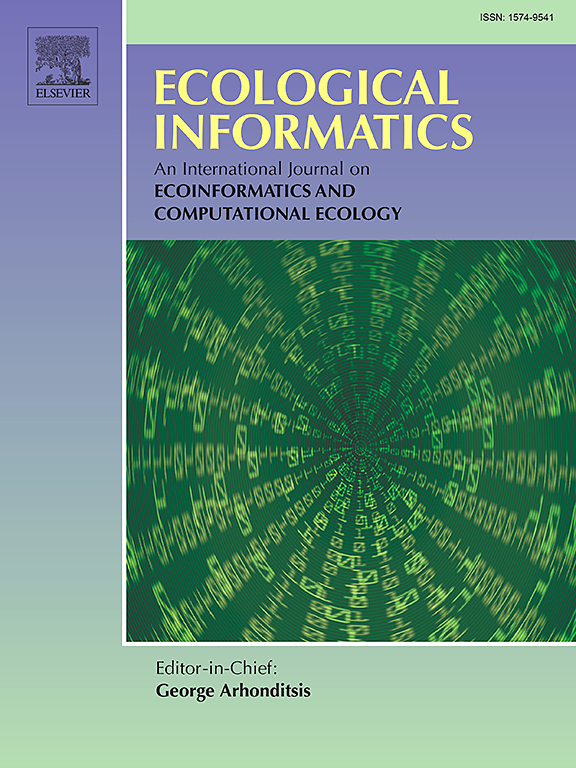A weather-driven mathematical model of Culex population abundance and the impact of vector control interventions
IF 5.8
2区 环境科学与生态学
Q1 ECOLOGY
引用次数: 0
Abstract
Even as the incidence of mosquito-borne diseases like West Nile Virus (WNV) in North America has risen over the past several decades, effectively modelling mosquito population density or abundance has proven to be a persistent challenge. It is critical to capture the fluctuations in mosquito abundance across seasons in order to forecast the varying risk of pathogen transmission from one year to the next. We develop a process-based mechanistic weather-driven Ordinary Differential Equation (ODE) model to study the population biology of both aquatic and terrestrial stages of mosquito population. The progression of mosquito lifecycle through these stages is influenced by different factors, including temperature, daylight hours, intra-species competition and the availability of aquatic habitats. In our work, weather-driven parameters are derived from a combination of laboratory research and data from the literature. In our model, we include precipitation data as a substitute for evaluating additional mortality in the mosquito population. We compute the Basic offspring number of the associated model and perform sensitivity analysis. Finally, we employ our model to assess the effectiveness of various adulticides strategies to predict the reduction in mosquito population. This enhancement in modelling of mosquito abundance can be instrumental in guiding interventions aimed at reducing mosquito populations and mitigating mosquito-borne diseases such as the WNV. This model could help optimise the timing of adulticide applications and evaluate the impact of multiple spray events within a short period.
库蚊种群丰度的天气驱动数学模型及媒介控制干预措施的影响
尽管在过去几十年里,西尼罗河病毒(WNV)等蚊媒疾病在北美的发病率有所上升,但有效地模拟蚊子种群密度或丰度已被证明是一项持续的挑战。为了预测一年到下一年病原体传播的不同风险,捕捉蚊子丰度在不同季节的波动是至关重要的。我们建立了一个基于过程的机械天气驱动的常微分方程(ODE)模型来研究蚊子种群的水生和陆地阶段的种群生物学。蚊虫生命周期的发展受不同因素的影响,包括温度、日照时间、种内竞争和水生生境的可利用性。在我们的工作中,天气驱动的参数来源于实验室研究和文献数据的结合。在我们的模型中,我们将降水数据作为评估蚊子种群额外死亡率的替代。我们计算了关联模型的基本子代数,并进行了敏感性分析。最后,我们利用我们的模型来评估各种杀虫剂策略的有效性,以预测蚊子种群的减少。蚊子丰度建模的这种增强可以有助于指导旨在减少蚊子种群和减轻蚊子传播疾病(如西尼罗河病毒)的干预措施。该模型可以帮助优化杀虫剂的应用时间,并在短时间内评估多次喷洒事件的影响。
本文章由计算机程序翻译,如有差异,请以英文原文为准。
求助全文
约1分钟内获得全文
求助全文
来源期刊

Ecological Informatics
环境科学-生态学
CiteScore
8.30
自引率
11.80%
发文量
346
审稿时长
46 days
期刊介绍:
The journal Ecological Informatics is devoted to the publication of high quality, peer-reviewed articles on all aspects of computational ecology, data science and biogeography. The scope of the journal takes into account the data-intensive nature of ecology, the growing capacity of information technology to access, harness and leverage complex data as well as the critical need for informing sustainable management in view of global environmental and climate change.
The nature of the journal is interdisciplinary at the crossover between ecology and informatics. It focuses on novel concepts and techniques for image- and genome-based monitoring and interpretation, sensor- and multimedia-based data acquisition, internet-based data archiving and sharing, data assimilation, modelling and prediction of ecological data.
 求助内容:
求助内容: 应助结果提醒方式:
应助结果提醒方式:


